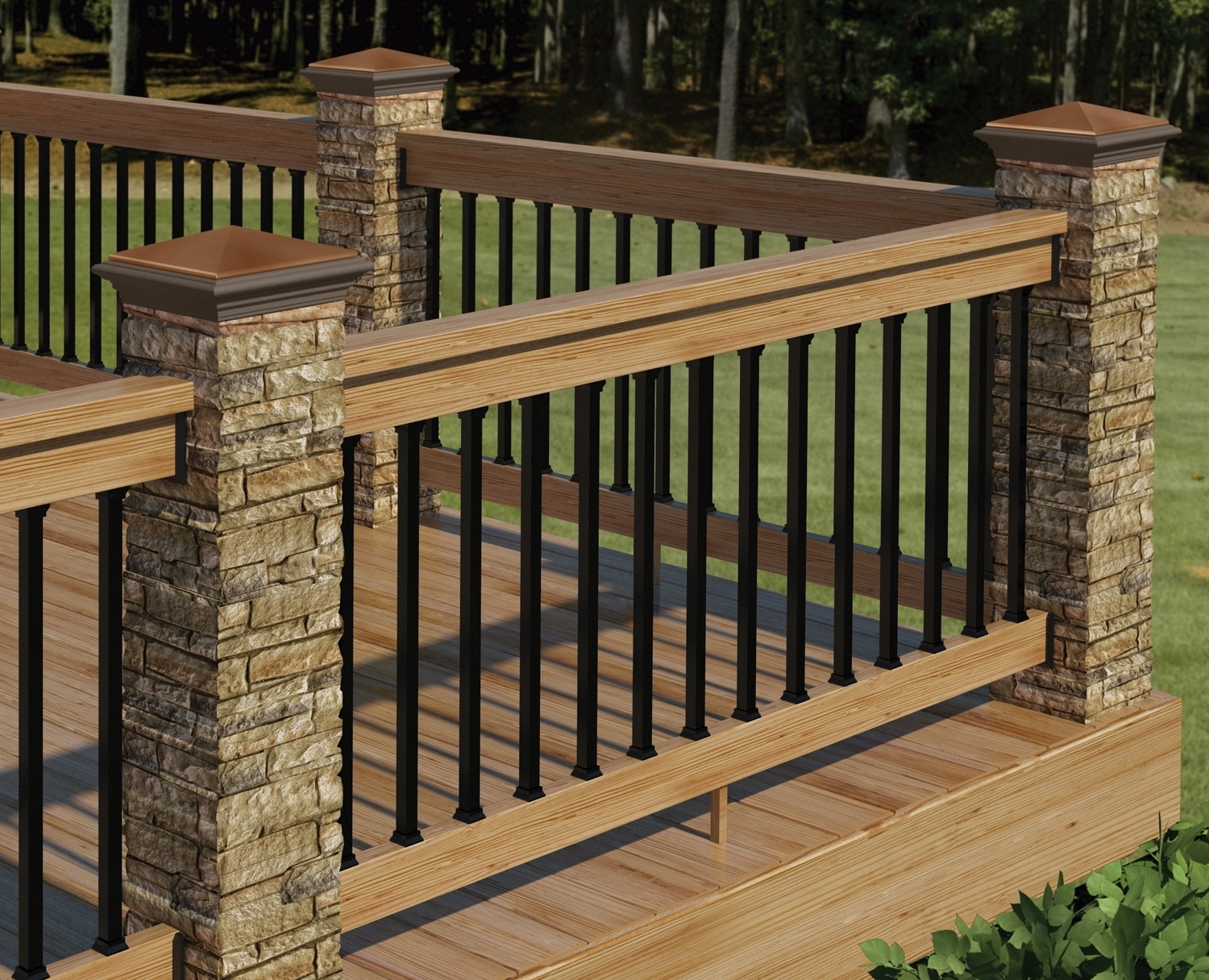Hey there! Looking to give your porch a makeover but feeling overwhelmed? This comprehensive guide will walk you through everything you need to know about choosing and installing porch railings, transforming your outdoor space into a stylish and safe haven.
Elevating Your Home’s Style with the Perfect Porch Railing
Porch railings are more than just safety features; they’re design statements that can dramatically enhance your home’s curb appeal. But with countless styles and materials available, selecting the ideal railing can feel like a daunting task. Don’t worry – we’re here to simplify the process, from choosing the perfect style to navigating installation.
Discovering Your Ideal Porch Railing Style
Your porch railing should harmonize with your home’s architectural style, creating a cohesive and visually appealing aesthetic. Here’s a look at some popular options:
- Traditional: Evokes classic elegance with intricate details and sturdy wood construction, often featuring turned balusters and decorative brackets.
- Modern: Emphasizes clean lines and minimalist design, utilizing materials like aluminum, glass, or cable railing for a sleek and contemporary look.
- Rustic: Creates a warm and inviting ambiance, incorporating natural materials like wood, twigs, or wrought iron, often with a focus on rough-hewn textures and handcrafted elements.
Choosing the Right Railing Material: Balancing Beauty and Brawn
The material you choose for your porch railing will impact its durability, maintenance requirements, and overall cost. Here’s a breakdown to help you make an informed decision:
| Material | Pros | Cons |
|---|---|---|
| Wood: | Timeless look, easy to customize, budget-friendly | Requires regular maintenance (staining, sealing), susceptible to rot and insect damage |
| Vinyl/Composite: | Low-maintenance, moisture-resistant, versatile in style | May fade in sunlight, may not be as strong as other options |
| Aluminum: | Durable, lightweight, low-maintenance, modern aesthetic | Can be pricey, may dent, limited design options |
| Steel/Wrought Iron: | Strong, elegant, makes a statement | Prone to rust (unless treated), heavy, can be expensive |
| Glass: | Unobstructed views, sleek and modern | Requires frequent cleaning, expensive, safety concerns with children and pets |
Installation: DIY or Call in the Professionals?
When it comes to installation, you’ll need to decide whether to tackle it as a DIY project or hire a professional contractor.
DIY Installation:
- Pros: Cost savings, sense of accomplishment.
- Cons: Requires confidence in your skills, safety considerations, may require specialized tools.
Professional Installation:
- Pros: Peace of mind knowing it’s done right, ensures code compliance, can save you time and potential headaches.
- Cons: Higher cost.
Beyond the Basics: Elevating Your Railings with Design Flair
Once you’ve chosen the basic style and material for your railings, consider these design enhancements to add personality and functionality:
- Illuminate with Style: Incorporate lighting for both ambiance and safety, opting for integrated lighting within the posts or string lights for a magical touch.
- Embrace Nature’s Beauty: Integrate planters or flower boxes overflowing with colorful blooms or cascading greenery, creating a mini oasis on your porch.
- Go Green: Opt for eco-friendly materials like reclaimed wood or bamboo railing, minimizing your environmental impact.
- Embrace Smart Technology: Integrate smart lighting or security features, enhancing convenience and peace of mind.
What is a Porch Railing Called?
While we commonly refer to them as “porch railings,” the formal architectural term is a balustrade.
A balustrade consists of:
- Balusters: The vertical supports that run between the top and bottom rails.
- Top Rail: The horizontal railing at the top, often serving as a handrail.
- Bottom Rail: An optional horizontal railing that adds an extra layer of security and visual appeal.
Knowing the correct terminology can be helpful when:
- Communicating with Contractors: Ensure clear and effective communication when discussing your design vision.
- Researching Styles and Options: Understanding terms like “cable railing” or “cathedral railing” allows for more targeted online searches and expands your design vocabulary.
What is the Best Type of Porch Railing?
The “best” type of porch railing depends on your specific needs, preferences, and home’s architectural style. Let’s consider the pros and cons of popular materials:
If you intend on adding a new porch fence to your home, you should read this first.
Key Points:
Style Selection:
* Traditional: Intricate details, sturdy wood
* Modern: Clean lines, aluminum, glass, cable
* Rustic: Warm, inviting, wood, twigs, wrought iron
Material Considerations:
* Wood: Timeless, customizable, budget-friendly (but requires maintenance)
* Vinyl/Composite: Low-maintenance, moisture-resistant, versatile (may fade in sun)
* Aluminum: Durable, lightweight, modern (pricey, limited design options)
* Steel/Wrought Iron: Strong, elegant (prone to rust, heavy)
* Glass: Unobstructed views, modern (requires frequent cleaning, expensive)
Installation:
* DIY Installation:
* Pros: Cost savings, accomplishment
* Cons: Difficulty, safety concerns
* Professional Installation:
* Pros: Peace of mind, expert craftsmanship
* Cons: Higher cost
Design Enhancements:
* Lighting for ambiance and safety
* Planters or flower boxes for greenery
* Eco-friendly materials
* Smart features (e.g., smart lighting, security)
What is the easiest deck railing to install?
For DIY enthusiasts, pre-assembled kits made from vinyl or composite materials offer the easiest deck railing installation, often requiring minimal experience and basic tools.
Why are these kits so easy to work with?
- Pre-cut and Pre-assembled: Eliminates the need for onsite cutting and simplifies the assembly process.
- Simple Connection Methods: Often utilize snap-fit systems, brackets, or hidden fasteners, making installation a breeze.
- Lightweight Materials: Easy to handle and maneuver, ideal for solo DIY projects.
- No Staining or Painting Required: Saves time and effort, unlike traditional wood railings.
By following these tips and carefully considering your options, you’ll be well on your way to creating a porch that is both beautiful and inviting.
- The Best Battery Picture Lamps for Effortless Artwork Illumination - April 1, 2025
- Double Sink Bath Vanity Tops: A Buyer’s Guide - April 1, 2025
- Bath Towel Measurements: A Complete Guide to Choosing the Right Size - April 1, 2025










